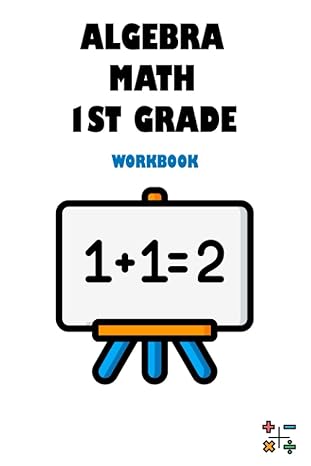Answered step by step
Verified Expert Solution
Question
1 Approved Answer
Name: Lab 7: Chapter 6 and Section 7.1 Some formulas which might be helpful to you: s x z* x t* n n x 0
Name: Lab 7: Chapter 6 and Section 7.1 Some formulas which might be helpful to you: s x z* x t* n n x 0 x 0 Z t / n s/ n Confidence level Z* 90% 1.645 95% 1.960 99% 2.576 Normal and t tables can be found on the Canvas website. 1. An airline wants to evaluate the depth perception of its pilots over the age of fifty. A random sample of n = 14 airline pilots over the age of fifty are asked to judge the distance between two markers placed 20 feet apart at the opposite end of the laboratory. The population standard deviation is 1.4. The sample data listed here are the pilots' error (recorded in feet) in judging the distance. 2.9 2.2 2.6 2.5 2.9 2.3 2.6 2.8 2.4 2.5 1.3 2.7 2.3 2.6 a) (1 point) What is the sample mean? (Use either SPSS or a calculator.) b) (4 points) Is there evidence that the mean error in depth perception for the company's pilots over the age of fifty is greater than 2.1? Use = 0.05. (Note: make sure you write the hypotheses, test statistic, P-value and conclusions in terms of the problem.) c) (2 points) What is the 90% confidence interval for the mean error in depth perception? 1 2. An airline wants to evaluate the depth perception of its pilots over the age of fifty. A random sample of n = 14 airline pilots over the age of fifty are asked to judge the distance between two markers placed 20 feet apart at the opposite end of the laboratory. The sample data listed here are the pilots' error (recorded in feet) in judging the distance. 2.9 2.2 2.6 2.5 2.9 2.3 2.6 2.8 2.4 2.5 1.3 2.7 2.3 2.6 a) (1 point) How is this problem different from Problem #1? b) (4 points) Is there evidence that the mean error in depth perception for the company's pilots over the age of fifty is greater than 2.1? Use = 0.05 and SPSS to get the results, and paste in the appropriate output. (Note: make sure you write the hypotheses, test statistic, P-value and conclusions in terms of the problem.) c) (2 points) What is the 90% confidence interval for the mean error in depth perception? 3. Is it even appropriate to use the t procedures in #2? We must look at our data to determine this. a) (1 point) What is the sample size? b) (1 point) According to the robustness guidelines, for this sample size, what do we need our data to look like in order for the t procedures to be appropriate? c) (1 point) Show a histogram of the data. Comment on any important features. d) (1 point) Show a Normal quantile plot of the data. Comment on any important features. e) (2 points) Is it appropriate to use the t procedures for this data? Explain why or why not. 2 SPSS Instructions for Lab 7 One-sample z test and confidence interval 1. Type data into SPSS. 2. Analyze Descriptive Statistics Descriptives Move the variable into \"Variable(s)\" box OK. You will get the sample mean in the output. 3. Calculate b) and c) by hand. One-sample t test and confidence interval 1. Analyze Compare means One-Sample T test 2. Move the variable into the \"Test Variable(s)\" box. 3. Type the value of under (2.1 in this problem) into the \"Test Value\" box. 0 H0 4. By default, it will also give you the 95% confidence interval. To change the confidence level, you may click \"Options\" on the right bottom corner of the \"One-Sample T Test\" window and then change it. Here, we need to change 95% to 90% for problem c). 5. Continue OK. 6. In the output, the P-value, Sig. 2-tailed, is for two-sided test. If you have a one-sided t test, your test P-value should be calculated based on the two-sided p-value 7. The one sample t confidence interval = (Test value + Lower, Test value + Upper) 3
Step by Step Solution
There are 3 Steps involved in it
Step: 1

Get Instant Access to Expert-Tailored Solutions
See step-by-step solutions with expert insights and AI powered tools for academic success
Step: 2

Step: 3

Ace Your Homework with AI
Get the answers you need in no time with our AI-driven, step-by-step assistance
Get Started


